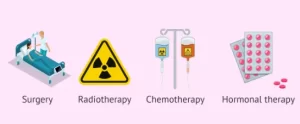Nipple correction surgery, also known as nipple reshaping or nipple augmentation, is a cosmetic procedure designed to address various aesthetic concerns related to the nipples. While the size, shape, and position of the nipples can vary widely among individuals, some may feel self-conscious or dissatisfied with their natural nipple appearance. Nipple correction surgery offers a solution to improve the symmetry, projection, size, or position of the nipples, helping individuals achieve their desired aesthetic goals.
Understanding Nipple Correction Surgery
Who Can Benefit from Nipple Correction Surgery?
Nipple reshaping surgery can benefit individuals who experience one or more of the following concerns:
- Inverted Nipples: Inverted nipples are characterized by the nipple being retracted or pointing inward instead of outward. Nipple correction surgery can release the adhesions that cause inversion, allowing the nipple to project outward.
- Enlarged Nipples: Some individuals may have nipples that are disproportionately large in relation to the size of their breasts. Nipple reduction surgery can reduce the size of the nipples, creating a more balanced and proportional appearance.
- Asymmetrical Nipples: Nipple correction surgery can address cases where the nipples are noticeably different in size, shape, or projection. The procedure aims to create symmetry and balance between the nipples.
- Nipple Reconstruction: Nipple reconstruction is typically performed for individuals who have undergone breast reconstruction following mastectomy. The procedure aims to recreate the appearance of a natural nipple.
Nipple Correction Surgery Procedure
The exact procedure for nipple correction surgery will depend on the specific concern being addressed. The surgery is typically performed under local anesthesia, and in some cases, general anesthesia may be used. The common techniques used in Nipple reshaping surgery include:
- Nipple Release: This technique is used to correct inverted nipples. The surgeon makes a small incision near the base of the nipple and releases the tight fibres causing the inversion. This allows the nipple to project outward.
- Nipple Reduction: To address enlarged nipples, the surgeon removes excess tissue from the nipple while preserving the natural shape and contour. The procedure aims to create smaller, more proportionate nipples.
- Nipple Augmentation: In cases where the nipples are underdeveloped or lack projection, the surgeon can perform a procedure known as nipple augmentation. This involves using grafts or dermal fillers to increase the projection and enhance the appearance of the nipples.
- Nipple Reconstruction: For individuals who have undergone breast reconstruction after mastectomy, nipple reconstruction can be performed using various techniques. The surgeon will recreate a natural-looking nipple using nearby tissues or through the use of grafts.
Recovery and Aftercare
Following nipple correction surgery, it is common to experience some swelling, bruising, and discomfort in the treated area. The surgeon may prescribe pain medication and provide specific aftercare instructions to ensure optimal healing. It is important to follow these instructions carefully, which may include:
- Wearing a special supportive bra or dressing to aid in healing and provide support.
- Avoiding strenuous activities and heavy lifting for a certain period.
- Keeping the incision sites clean and dry.
- Attending follow-up appointments to monitor the healing progress.
Nipple correction surgery is performed under local anesthesia, minimizing pain.
Benefits of Nipple Correction Surgery
Undergoing nipple correction surgery can offer several benefits, both physical and psychological:
- Improved Nipple Appearance: Nipple correction surgery enhances the aesthetics of the nipples, creating a more balanced and appealing appearance.
- Increased Confidence: Correcting nipple imperfections can boost self-confidence and self-esteem, improving body image and a greater sense of self-assurance.
- Symmetrical Nipples: The surgery can address asymmetrical nipples, creating a more symmetrical and harmonious breast appearance.
- Enhanced Breast Aesthetics: Nipple correction surgery can improve overall breast aesthetics, creating a more proportional and balanced breast contour.
- Restored Functionality: For individuals with inverted nipples, the surgery can improve functionality by allowing breastfeeding or making it easier to apply nipple jewelry or clothing.
- Improved Clothing Fit: Nipple correction surgery can help achieve a more natural and flattering clothing fit without the concern of protruding or asymmetrical nipples.
- Increased Comfort: Correcting nipple issues can alleviate physical discomfort or irritation caused by inverted, enlarged, or misshapen nipples.
- Correction after Mastectomy: Nipple reconstruction surgery can recreate the appearance of a natural nipple for individuals who have undergone breast reconstruction after mastectomy.
- Long-lasting Results: Nipple correction surgery provides long-lasting results, allowing individuals to enjoy the benefits of improved nipple aesthetics for an extended period.
- Personal Satisfaction: Many individuals who undergo nipple correction surgery express high satisfaction levels and report feeling happier with their overall appearance, enhancing their quality of life.
Nipple inversion and corrective surgery are usually only undertaken for cosmetic purposes.Finesse cosmetic surgery
Considerations and Risks
Like any surgical procedure, nipple correction surgery carries certain risks and considerations:
- Scarring: Nipple reshaping surgery involves incisions, which may leave behind some degree of scarring. However, skilled surgeons strive to minimize scarring and place incisions in inconspicuous locations for optimal cosmetic results.
- Infection and Bleeding: As with any surgery, there is a risk of infection or excessive bleeding. Following post-operative care instructions and maintaining good hygiene can help minimize these risks.
Summary
Nipple correction surgery allows individuals to address aesthetic concerns related to their nipples and achieve a more desirable appearance. Whether it involves correcting inverted nipples, reducing enlarged nipples, creating symmetry, or reconstructing nipples after mastectomy, the surgery aims to enhance aesthetics, boost confidence, and improve functionality.
By consulting with a skilled plastic surgeon, individuals considering Nipple reshaping surgery can thoroughly understand the procedures, benefits, and potential risks involved, making an informed decision to pursue their desired aesthetic goals.
FAQs:
1. Is nipple correction surgery painful? Nipple correction surgery is performed under local anesthesia, minimizing pain. Some discomfort may be experienced during the recovery period.
2. How long is the recovery time? Recovery time varies, but swelling and bruising typically subside within a few weeks. Normal activities can be resumed within a week or two, with strenuous exercise and heavy lifting avoided for a few weeks.
3. Does nipple correction surgery affect breastfeeding? Nipple correction surgery does not usually affect breastfeeding ability, but it’s advisable to consult with a surgeon to address any specific concerns.




